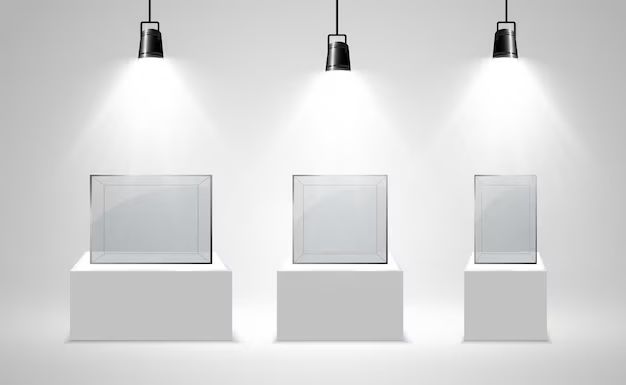The box that holds a light fixture in place is most commonly referred to as a light fixture box, electrical box, or junction box. These boxes are a critical component in lighting installations, as they contain and protect electrical connections while also securely mounting the light fixture.
Page Contents
Types of Light Fixture Boxes
There are a few main types of boxes used for mounting light fixtures:
- Plastic light fixture boxes – Made of PVC or other plastic. Inexpensive but not as sturdy.
- Metal light fixture boxes – Made of galvanized steel. Sturdier but more expensive.
- Cast boxes – Made of cast metal alloy. Very sturdy for heavy fixtures.
- Ceiling boxes – Designed to mount flush with the ceiling.
- Outlet boxes – Standard boxes also used for receptacles.
The most common type of light fixture box is a simple round or square steel box. However, there are also specialized boxes such as pancake boxes for low-profile installations or cast boxes for very heavy light fixtures.
Key Features of Light Fixture Boxes
Light fixture boxes have a few important features:
- Mounting tabs – Allow securing the box to framing members
- Holes – Knockout holes allow cables to enter and exit
- Clamps – Hold cables securely in place
- Mounting screw holes – Allow the light fixture to be screwed to the box
- Volume – The interior size must be large enough for wires, connections, and hardware
These features allow the light fixture box to safely contain connections, wires, and hardware while mounting securely in place.
Common Light Fixture Box Sizes
Light fixture boxes come in a range of standard sizes:
| Box Type | Dimensions |
|---|---|
| Octagon box | 4″ x 1-1/2″ |
| Round ceiling box | 4″ diameter x 1-1/2″ deep |
| Single-gang box | 2-3/4″ x 2-3/4″ x 1-1/2″ |
| Double-gang box | 4-11/16″ x 2-3/4″ x 1-1/2″ |
| Pancake box | 1-1/2″ deep |
The most commonly used light fixture boxes are 4-inch round or octagon boxes. However, the box needs to be matched to both the light fixture size and the available space in the installation location.
Materials for Light Fixture Boxes
Light fixture boxes can be made from:
- Sheet metal – Galvanized or painted steel provides strength at a low cost.
- Cast metal – Cast zinc or aluminum alloy for heavy-duty applications.
- Non-metallic – PVC and fiberglass boxes resist corrosion and are inexpensive.
- composites– Fiber-reinforced thermoset plastics provide high strength.
Sheet metal is the most common choice for its strength, durability, and low cost. Cast boxes provide extra strength for very heavy fixtures. Non-metallic boxes avoid corrosion issues in damp locations but may not be as sturdy.
Why are Light Fixture Boxes Required?
There are some important reasons why a light fixture box is required:
- Houses electrical connections – Splices, wire nuts, and terminals need to be protected within an enclosure.
- Provides mounting points – The box gives the light fixture something secure to attach to.
- Safety – Protects against accidental contact with live wires.
- Fire protection – Containment limits fire risk from electrical faults.
- Structural stability – Secures the weight of the fixture.
- Electrical code – Most codes require approved electrical boxes for permanence and safety.
Without an appropriate light fixture box, a lighting installation would lack safety, durability, and structural integrity. The box is an essential component.
Light Fixture Box Installation Tips
Here are some helpful installation tips for light fixture boxes:
- Choose the right box size and type for the fixture and location.
- Position the box correctly so the fixture will hang properly.
- Secure the box to framing members or a structural surface.
- Use approved mounting methods like screws through mounting tabs.
- Keep the top of the box flush with the ceiling or wall surface.
- Run wire through knockout holes and secure with clamps.
- Follow all electrical code requirements for clearance space, box fill, etc.
Proper installation is key to getting a light fixture box that performs correctly and safely. Taking the time to do it right will pay off.
Light Fixture Box Safety Tips
Safety should always be the top priority when working with electrical boxes:
- Turn off power at the breaker before starting work.
- Use caution when working with live wires.
- Wear personal protective equipment like gloves and eye protection.
- Look for overhead hazards like pipes or wires when lifting fixtures.
- Keep live parts contained within the closed box.
- Secure the cover plate to prevent accidental contact.
- Label circuits clearly for safety.
- Follow all electrical codes for required clearances.
Rushing can lead to mistakes with electrical work. Focusing on safety will prevent shocks, burns, or even electrocution.
Conclusion
In summary, the metal or plastic box that houses a light fixture’s electrical connections and hardware is referred to as a light fixture box, electrical box, or junction box. These boxes come in a variety of shapes and sizes but generally feature mounting tabs, knockouts, cable clamps, and screw holes for attaching the light fixture itself. Light fixture boxes are required by electrical codes for safety and proper structural mounting. With good installation and safety practices, a light fixture box will provide reliable service.
